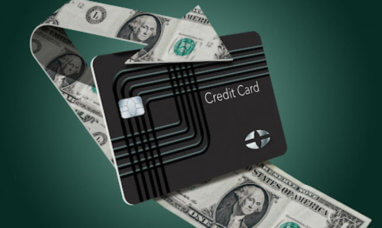Don’t worry, we’ve heard it before. “Help, my credit charges 18.8% interest!” Actually, many people are paying more than this. It seems as if the saying that nothing is certain but death and taxes should now also include credit card interest.
But how much does credit card interest cost, how do credit card providers determine interest rates, how does it work, and how is it calculated? In this post, we’ll look at these questions in more detail.
How Does Credit Card Interest Work?
Before looking at how credit card interest works in more detail, let’s first recap what credit card interest actually is. In simple terms, credit card interest is what credit card companies charge you for borrowing money.
So, you can almost think of it as the fee you pay like you would for any other service you use. Typically, credit card interest is expressed as an annual percentage rate or APR. This annual percentage rate on a credit card then determines what your monthly payments will be.
Generally, credit card providers only charge you interest if you carry a balance from one month to the next. For example, if you spend $500 on your credit card this month but pay it off before the end of the month, you won’t be liable for any interest.
Conversely, if you spend the same $500 but pay it over three months, you’ll pay interest for the period after the initial month in which you spent the $500. We’ll look at the calculation of credit card interest in more detail a little bit later.
How Do Card Issuers Determine Interest Rates?
This isn’t a simple question to answer because many credit card providers have different ways of determining the interest rate they’ll charge. For instance, some providers charge the same APR for all their customers. In contrast, other credit providers have a variable APR with an upper and lower limit of interest they’ll charge, and the rate you’ll pay typically depends on your credit score. But beware of red flags from credit offers with high interests.
Here, a variable interest rate means that it will fluctuate according to prevailing market conditions. Also, variable APRs are often determined based on a specific benchmark like the federal reserve’s benchmark prime rate. So, these providers will use the benchmark and then add on a number of percentage points based on your credit profile.
For example, if your provider charges you prime plus 15% and the current prime rate is 3.25%, you’ll end up paying interest of 18.25% per year. Interestingly, the current average credit card interest rate in the US is 16.16%. Keep in mind, though, that rates vary tremendously, and you could pay as little as 0% or as much as almost 25%, depending on the product and the provider.
Best Credit Cards of July 2024
Now that we’ve seen how credit card interest works and how credit card providers determine their interest rates, let’s look at how credit card interest is calculated. To do the calculation, you’ll first need to convert your APR to a daily rate. This will give you the periodic interest rate or the daily periodic rate. Here, to do this, you’ll divide your APR by 365.
Next, you’ll have to calculate your average daily balance. So, you’ll start with your opening balance, or in other words, the outstanding amount carried over from the previous month, and tally up all the daily balances and divide by the number of days the amount is outstanding. Here, the number of days is typically indicated on your credit card statement. This will give you your average daily balance.
The final step is to multiply the average daily balance by the periodic rate. This will give you the interest you’ll need to pay. Keep in mind, though, that depending on whether the credit card provider compounds interest monthly or daily, this amount could differ slightly.
To illustrate this concept better, let’s look at a simple example. Let’s assume you have an outstanding balance on your credit card of $3,000 and that your credit card provider charges you interest at an APR of 18%. Let’s also assume that your credit card provider requires a minimum monthly payment of 3% of the outstanding balance.
Now, based on the above method, let’s calculate the interest. Here, to simplify the calculation, we’ll calculate interest on a monthly instead of a daily basis. To do the calculation, we’ll first need to calculate the monthly APR, which is 1.5% in this case.
The next step is to calculate the interest you would be liable for based on this periodic rate. To do this, we’ll multiply $3,000 by 1.5% which gives us $45. So, you’ll pay interest of $45 on an outstanding balance of $3,000 at an APR of 18%.
Now, based on the required minimum monthly payment, which in this case amounts to $90, half of the payment will go towards paying off the debt and the other half towards interest. As a result, at the end of the month, your new balance will be $2,955.
Ultimately, this means you’ll take almost 14 years to pay off the debt if you keep paying the minimum monthly payment, and you’ll pay almost $2,700 just in interest.
How Can You Lower Your Credit Card’s Interest Rate?
Considering the above, it’s totally understandable that you would want to lower the interest rate on your credit card. Fortunately, it’s possible. To explain, let’s use another simple example. Let’s say you have a Discover credit card and you want some guidance on how to lower the interest rate on a Discover credit card.
Let’s also assume that the terms of your card are exactly the same as our earlier example. Now, instead of making the minimum payment, you’ll pay $150 every month. In this case, you’ll pay off the debt in two years and only pay about $590 towards interest. That’s a saving of over $2,000.
Apart from paying more than the minimum payment, you can also reduce your total interest by paying off your credit card every month or by making more than one payment a month.
Although these strategies won’t reduce your credit card interest rate, they will, as the example shows, reduce the amount of interest you’ll need to pay significantly.
The Bottom Line
Depending on your specific credit card, the provider, and how much you pay every month towards your debt, you could pay a massive amount of interest every month. Hopefully, this post helped illustrate how credit card interest works, how it’s calculated, and some simple strategies you can use to reduce your interest payments.
Featured Image: Megapixl








